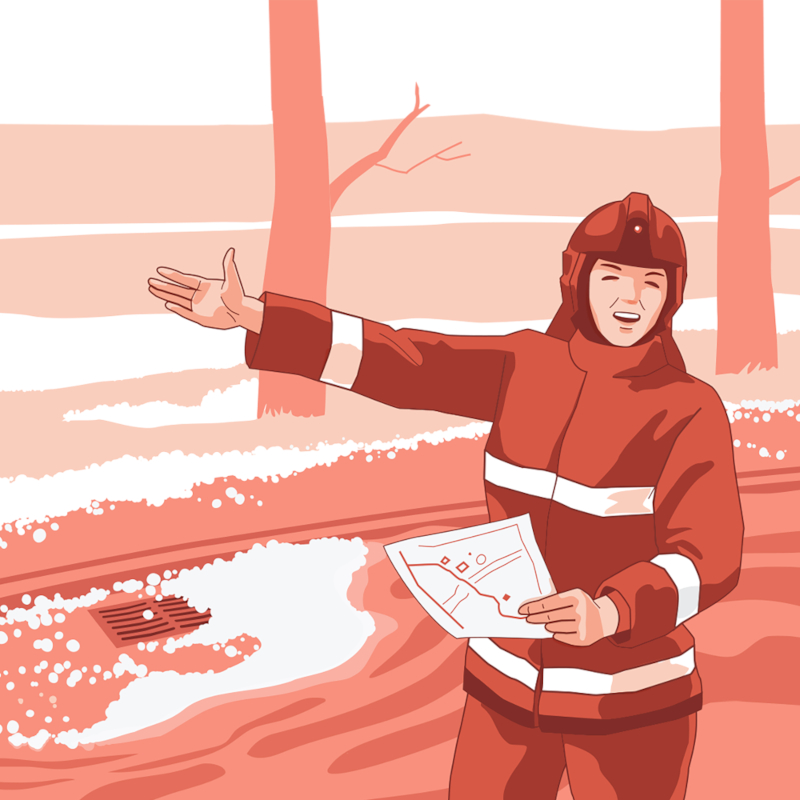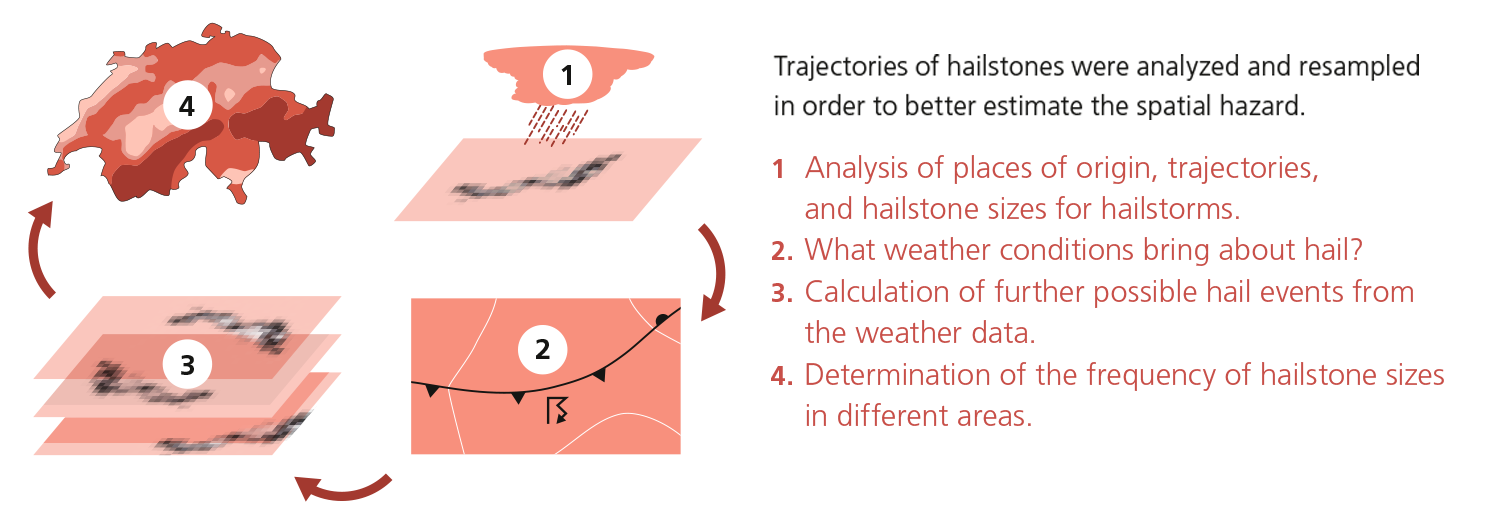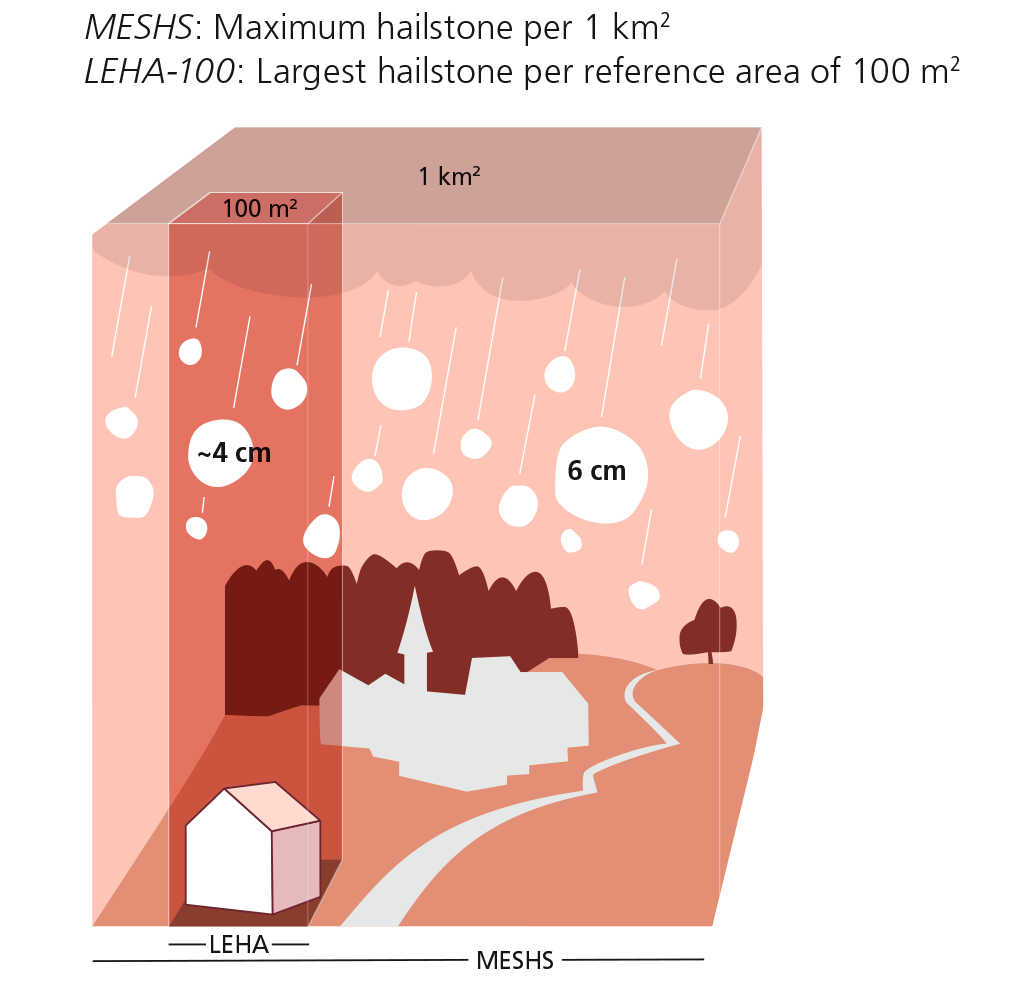New radar hail data and methodical approaches allow the calculation of return values in the form of hailstone sizes in rare events and the estimation of hailstone sizes in smaller areas, as developed for the application. The results facilitate the assessment of the hail hazard and the conducting of risk analyses – for example, in civil protection and operational planning during natural hazard events.

On the Trail of Potential Hailstorms
In an international comparison, the time series of the radar hail data is fairly long, at 19 years – and yet rather short for climatological analyses. Because hail events occur on a very small scale, there are many areas in which hail was rarely or never observed during the measurement period. In order to be able to make comprehensive statements about the hazard posed by hail events, a resampling approach (a statistical method from risk modeling) has been applied. The aim is to replicate observed hail events in such a way that the entire range of possible events is captured. In order to be able to make assertions about the frequency of hailstone sizes, the trajectories, hailstone sizes, and areas, as well as the large-scale weather conditions of over 40,000 hail events measured by the weather radar were analyzed. With the help of time series of weather conditions from past decades, hail events that seem possible in the current climate on the basis of the observational data were simulated. Thus, a spatial assessment of the hazard, for instance for a return period of 50 years, can be realized based on the simulated hail events.
Replication of observed hail events in the resampling process

From the Square Kilometer to the Rooftop
The maximum expected hailstone size MESHS derived from the weather radar refers to the area of one square kilometer. However, reference areas are generally smaller: a single-family house, for example, has a footprint of around 100 square meters, or 10,000 times smaller than the MESHS area. Because only a few of the very largest hailstones fall within a square kilometer, the probability that such a hailstone will fall on the roof of a specific house is quite small. In order to obtain a meaningful basis for analyses on user-defined reference areas smaller than one square kilometer, the LEHA statistic derived from MESHS based on a typical hailstone distribution is used. Damage data on hail events from the insurance partners as well as hailstone sizes observed and reported via the MeteoSwiss-App support the LEHA approach.
From MESHS to LEHA

Radar Hail Data
Hail cannot be measured comprehensively on the ground. All the products presented are based on radar hail data (occurrence and hailstone size) derived from radar measurements with the help of algorithms. Radar hail data from the period of 2002 to 2020 were used for the project’s products. In total, approximately one million five-minute radar hail records were checked and corrected. The spatial resolution of the radar hail data is one square kilometer. The radar hail data are checked for plausibility with selective ground observations such as actual observed hailstones or damages.
According to your selection criteria, you will get a wealth of graphics here on the MeteoSwiss website, as well as further information on the methods and data.
The technical report describes the methods and findings of the project “Hail Climate Switzerland” in detail. It is intended for researchers and is available in English.
Last modification 28.06.2023





